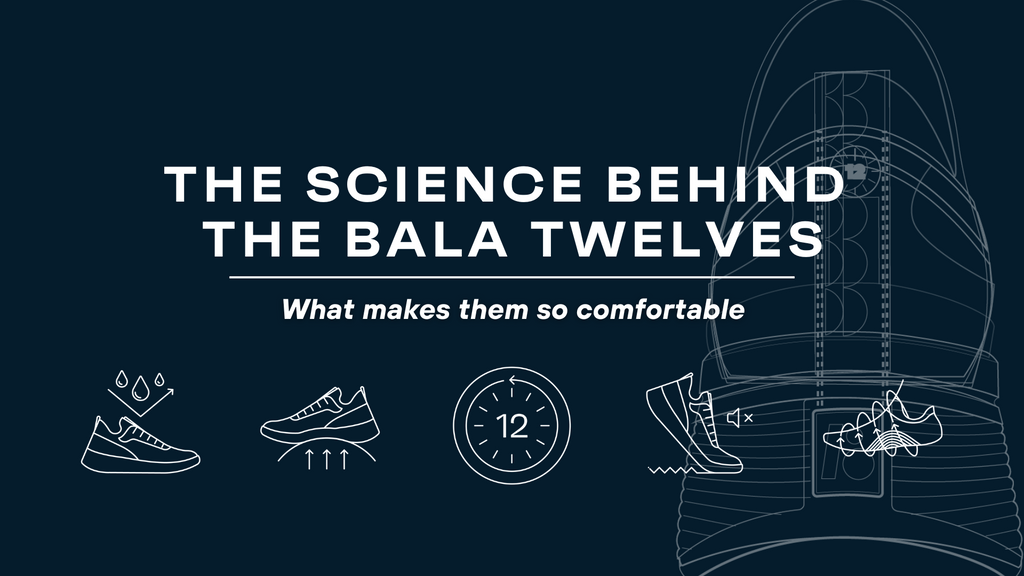Ever wondered how the soles of your Twelves work their magic? Wonder no more: we asked two experts for answers. In the following article, BALA's Vice President of Product and Merchandising, Chris Sataua, and veteran footwear scientist Jeff Pisciotta explain the science behind the designs of our insole, midsole, and outsole, and reveal how each was tailored to the unique needs of nurses!
Arch M-Brace / Sockliner
An insole designed with dynamic memory foam technology that adapts to the unique shape of your foot. Designed with women's feet in mind, as over 90% of nurses in the United States are women!
Chris Sataua: Women have a tremendous amount of variability in the shape, position, and height of their arch. They have a lot more variability than men.
Jeff Pisciotta: The arch is the most variable region of the 12 different foot measurements I have studied. And more variable in women, particularly in height.
Chris: Arch support is inherently problematic if it's meant to maintain the shape of the arch. That can cause all kinds of pain issues, mobility issues. So you don't want to provide this rigid support, you want proprioceptive awareness of your foot. You feel it, and it helps you keep your arch engaged as you walk.
We tried different heights of this, we experimented with a couple different versions as starting points before settling on this final version. We've seen just incredible results, whether you have a low arch, a very high arch, even from folks who need custom insoles.
HRS Cushioning / Midsole
A supportive platform that disperses forces from walking and standing across your foot.
Chris: That was a recommendation from Jeff. We experimented with a variety of formulations and ended up with one that was most optimized to absorb impact while walking and standing for long periods of time.
Squishier cushioning systems are less about absorbing impact and more about optimizing for energy return. That's not helpful at all when you're walking and what you really need is to have the impact distributed evenly.
Jeff: Twelves needed to have the appropriate balance between impact attenuation and load distribution. This is very difficult to achieve with athletic performance footwear. However, knowing the primary activities of our consumers were standing, walking, and lifting, we were dealing with lower forces than in sports. I won't go into too much biomechanical depth here, but it is kind of a myth that softer, squishier foams provide more cushioning. This is due to distribution of loads and pressures over the entire plantar surface of the foot. Pressure distribution is very important for more static activities, such as standing for long periods of time (think OR nurses). A firmer midsole also improves overall stability.
CodeGrip / Outsole
A high-traction rubber outsole that holds its grip on hospital floors without a single squeak.
Chris: If you want to get really good traction in all directions, you would use a chevron or zig zag pattern, but our outsole is mostly focused on front-to-back movement, not lateral movement. That's based on how we see them being mostly used–– bending down, running. The outsole pattern gives you maximum traction in those positions.
Jeff: There is a physics/mechanics reason for squeaks. The core principle is the "stick-slip phenomenon," which has been studied in basketball footwear (infamous for squeaks). Essentially, the friction between two smooth surfaces tends to produce a vibration as the outsole sticks then slightly slips (there is no such thing as a "hard stop") during foot-strike.
Early on, we knew the primary surface would be linoleum– typically a very smooth surface. Therefore, the outsole was kept flat with a simple linear traction design that provided appropriate friction and traction.
